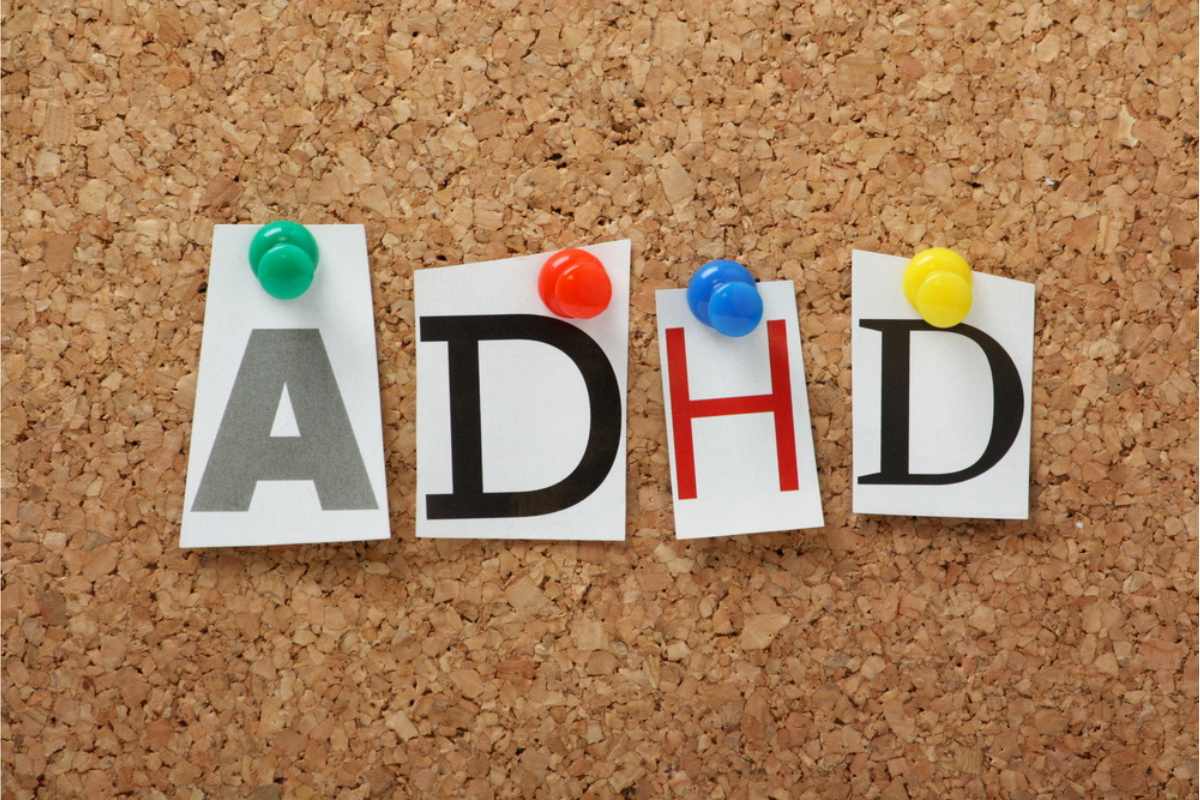April 15, 2024
Find Calm and Focus with the Safe and Sound Protocol
Written by Guest Author
Posted in ADHD/Autism and with tags: ADHD, autism

Does the world feel a little too loud, a little too bright, or a little too much for you or your child? You’re definitely not alone. Many people struggle with sensory overload, anxiety, and trouble focusing. Here at Eddins Counseling, we get it, and we want to offer you some hope with a revolutionary therapy called the Safe and Sound Protocol (SSP).
Imagine a world where loud noises don’t send your child into meltdowns, where bright lights don’t cause overwhelm, and crowded places feel a little less scary. What if you could finally focus on that important project at work without getting sidetracked, and everyday tasks felt less daunting? Imagine being able to manage your emotions and navigate stressful situations with more ease.
SSP can help make this a reality!
What is SSP and how does it work?
Think of SSP as a kind of gentle retraining for your ears and nervous system. It uses specially designed music with specific frequencies and patterns. These sounds aren’t like your typical music; they’re created to target the auditory processing pathways in your brain. By gently stimulating these pathways, SSP can help your brain become better at filtering out distractions and processing information more effectively.
This improved processing is linked to the nervous system. Our nervous system has two main parts: the sympathetic nervous system, which is responsible for our fight-or-flight response, and the parasympathetic nervous system, which helps us relax and calm down. SSP is thought to work by stimulating the vagus nerve, a key player in the parasympathetic nervous system. By activating this nerve, SSP can help your body switch out of fight-or-flight mode and into a more relaxed state.
Science behind the calm

SSP is based on Polyvagal Theory, which proposes a fascinating connection between the nervous system and our perception of safety. This theory suggests that our nervous system has a built-in hierarchy, with different circuits controlling our reactions to threats.
At the top of this hierarchy is the social engagement system, which relies on the vagus nerve. When we feel safe and secure, this system is activated, allowing us to connect with others and process information calmly.
However, when we perceive danger, the body moves down the hierarchy to more rudimentary survival modes. If escape seems impossible, we might freeze in place, a state mediated by the dorsal vagal complex. In the most extreme situations, the sympathetic nervous system takes over, triggering the fight-or-flight response.
By stimulating the vagus nerve, SSP is thought to help activate the social engagement system, promoting feelings of safety and well-being. This can lead to a cascade of benefits.
Benefits of the relaxation response:
These are some of the key improvements you could experience as a result of the SSP protocol:
Reduced Anxiety
Constant anxiety and feeling on edge can be incredibly draining. SSP can help your nervous system shift out of fight-or-flight mode and into a calmer, more regulated state. This can manifest as a decrease in general worries, less physical tension, and a greater sense of inner peace.
Improved Focus and Attention
Do you ever feel like your mind is constantly bombarded with distractions? SSP can help train your brain to better filter out irrelevant information and focus on the task at hand. This can lead to increased productivity, improved concentration while studying or working, and a sharper overall cognitive ability.
Enhanced Emotional Regulation
Feeling overwhelmed by emotions can be a real struggle. SSP can equip you with the tools to manage your emotions in a healthier way. You might find it easier to identify your emotions, respond to them calmly, and avoid emotional outbursts.
Reduced Meltdowns and Anxiety in Children
For children who struggle with sensory overload or anxiety, SSP can help them feel safer and more secure in their environment. This can lead to fewer meltdowns, a decrease in anxious behaviors, and a more positive overall emotional state.
Fewer Panic Attacks
Panic attacks can be debilitating and frightening. SSP can help reduce the frequency and intensity of panic attacks by calming the nervous system’s fight-or-flight response. This can lead to a significant improvement in quality of life and a decrease in overall anxiety.
Stronger Social Interaction Skills
Anxiety and difficulty processing sensory information can make social situations very stressful. By promoting feelings of calmness and improving emotional regulation, SSP can make social interactions less overwhelming. You might find yourself feeling more comfortable connecting with others, engaging in conversation, and forming deeper social bonds.
These are just some of the potential benefits of SSP. Everyone experiences this therapy differently, and the results may vary. However, the research on SSP is promising, and it could be a valuable tool to help you or your child find greater calm, focus, and well-being.
Success Story: A calmer classroom for John
Imagine the relief for parents who worry constantly about their child’s outbursts in school. This was the reality for John’s parents. John, a 10-year-old with autism, struggled with intense emotions and meltdowns, making his classroom experience overwhelming for him and his teachers.
According to case studies by Integrated Listening Systems, after participating in the SSP program, John’s occupational therapist witnessed a dramatic shift. John became noticeably calmer in the classroom, managing his frustration and anger with far greater ease. This not only made John’s school days less stressful but also created a more positive learning environment for his classmates and teachers.
John’s story is a powerful example of how SSP can empower children on the spectrum to navigate their emotions and experience the world around them with more confidence and openness.
Success Story: A lunch date for Anna
Anna desperately craved a world where everyday sounds didn’t trigger intense anxiety and rage. Simple noises like chewing, sniffling, or even breathing could send her into a spiral. This was the reality for Anna, a 40-year-old woman battling both Misophonia (sensitivity to specific sounds) and OCD. As described in this case study, Anna’s Misophonia became so severe that it limited her ability to leave the house and even forced her to take a work-from-home job.
However, after undergoing the SSP protocol, Anna experienced a life-changing transformation. She reported feeling significantly calmer and was even able to enjoy lunch with friends for the first time in years, without needing to wear noise-canceling headphones!
Anna’s story exemplifies the power of SSP to help people overcome overwhelming sensory sensitivities and reclaim their lives from the grip of anxiety.
Answers to your questions
Are there any side effects associated with SSP?
SSP is generally considered a safe and well-tolerated intervention. Some people may experience mild, temporary side effects like fatigue or headache during the initial sessions. These typically subside quickly as the body adjusts to the program. It’s important to communicate any concerns to your therapist.
Is there any scientific research to support SSP?
Yes, there’s a growing body of research on SSP. The program is based on Polyvagal Theory, developed by Dr. Stephen Porges. This theory proposes a connection between the nervous system, particularly the vagus nerve, and our perception of safety.
Studies on SSP have shown promising results for various conditions. For instance, a 2014 study published in the International Journal of Psychophysiology by Porges et al. demonstrated the positive effects of SSP on social communication in children with autism spectrum disorder (ASD). Another study published in the Journal of Autism and Developmental Disorders in 2020 by Bieleninik et al. found that SSP improved auditory processing and emotional regulation in adults with ASD.
It’s important to note that SSP research is ongoing, and more studies are needed to fully understand its long-term effects for various populations. However, the current research suggests SSP offers a promising approach for improving nervous system regulation and overall well-being.
What are the long-term effects of SSP?
While research on SSP’s long-term effects is ongoing, current studies suggest it can lead to lasting improvements in various areas. Here’s a look at some promising findings:
- Reduced Anxiety: A 2017 pilot study published in the journal Frontiers in Integrative Neuroscience by Neufeld et al. investigated the effects of SSP on anxiety in adults. The study found that participants who underwent the SSP protocol showed significant reductions in anxiety scores compared to the control group.
- Improved Focus and Attention: Research suggests SSP may enhance auditory processing, which can lead to better focus and attention. A 2014 study by Bieleninik et al. in the Journal of Autism and Developmental Disorders found that adults with ASD who underwent SSP showed improvements in auditory processing skills.
- Enhanced Emotional Regulation: Studies suggest SSP can promote emotional regulation by stimulating the vagus nerve, which plays a key role in the parasympathetic nervous system’s calming response. A 2014 study by Porges et al. published in the International Journal of Psychophysiology indicated positive effects of SSP on emotional regulation in children with ASD.
It’s important to remember that individual results may vary, and more long-term studies are needed to definitively determine SSP’s lasting effects. However, the current research suggests SSP has the potential to provide long-lasting improvements in anxiety, focus, emotional regulation, and sensory processing, leading to an overall enhanced quality of life.
What happens during a typical SSP session?
During a typical SSP session, you’ll listen to specially designed music through headphones in a comfortable environment. The therapist will monitor your progress and adjust the program as needed. Sessions typically last for 30-45 minutes.
Can SSP be done at home?
Yes, you can listen to the SSP program at home as part of your treatment plan. However, this should be done under the guidance of a certified therapist who will create a personalized protocol and monitor your progress.
Is SSP a replacement for traditional treatment plans?
No, SSP is not a replacement for traditional treatment plans. It’s considered a complementary therapy that can be used alongside medication, therapy, or other interventions to improve overall well-being.
Is SSP right for you?
While SSP offers a range of benefits, it’s not necessarily a one-size-fits-all solution. Here’s a breakdown to help you decide if it might be a good fit for you:
- Do you or your child have one of the following conditions: Anxiety, Autism, or ADHD?
- If you don’t have a diagnosed condition, do you or your child struggle with anxiety, overwhelm, or have difficulty focusing?
- Are you open to complementary therapy? If you’re open to exploring alternative approaches to managing well-being, SSP could be worth considering.
We, at Eddins Counseling, have seen amazing results with SSP, and we’d be happy to chat with you to explore if it could be the key to unlocking a calmer, more focused, and happier you.
Ready to take the first step?
Schedule a consultation with Eddins Counseling today! We’ll talk about your unique needs and see if SSP could be the key to a world filled with more calm and joy.
Don’t wait any longer to find the peace and potential you deserve. Call us at 832-559-2622 or book a consultation to learn more about SSP. We look forward to helping you create a brighter future!
Grounding & Self Soothing
Get instant access to your free ebook.















